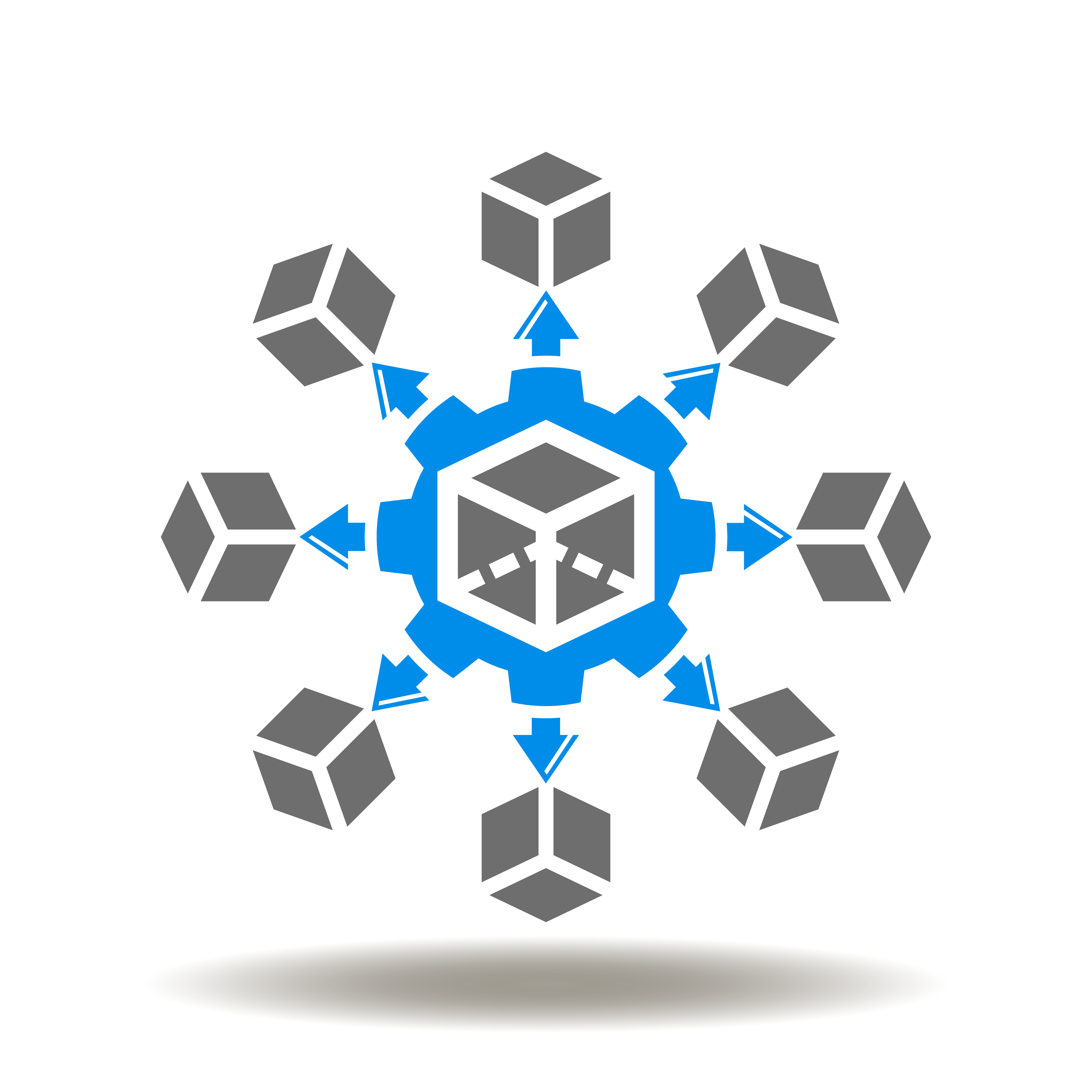The benefits of managed Kubernetes on OVHcloud

Scalability. Usability. Compatibility. Security.
Whether intended for business use or a consumer audience, these characteristics are pivotal in developing a successful application. Apps must be compatible with a wide range of systems and platforms, capable of effortless scaling, and intuitive without sacrificing data security. Even for a development team that’s perfected the principles of DevOps, that’s a tall order — arguably an impossible one.
The solution? Cloud-native development built on a microservices architecture. And that’s exactly where Kubernetes comes in.
What is Kubernetes?

As one of the world's most popular container orchestration platforms, the open-source Kubernetes automates a significant volume of the manual work typical of application development.
Originally developed by engineers at Google Alphabet before eventually being donated to the Cloud Native Computing Foundation, Kubernetes is supported by a thriving open-source community.
Through its container-based approach, Kubernetes considerably streamlines and simplifies application development.
To understand how and why, however, we'll first need to define a few basic concepts of the solution.
Kubernetes containers

Containers have a lot in common with virtual machines, being that they're isolated virtual environments in which software can be executed. The primary difference is that VMs typically run operating systems or virtual desktops independent of their host server. Containers, meanwhile, all share the host's OS.
How exactly does that make them beneficial from a development standpoint, though?
Per technology talent acquisition specialist Built In, the core concept of a development container is similar in nature to a meal kit. Just as meal kits include everything someone needs to prepare a meal at home, a container bundles everything required for an application to run. This is beneficial for several reasons:
Kubernetes further amplifies these benefits by automating the configuration, deployment, management, and scaling of its containers via microservices.
Kubernetes and microservices architecture

Generally speaking, there are two choices when it comes to architecting a cloud application. The first, monolithic architecture, is precisely what it sounds like. All components of a monolithic application are built as a single, contiguous system.
Microservices-based applications, meanwhile, are built from multiple services or components, each of which can function independently of the others. By leveraging microservices in application development, one can more easily construct complex, scalable, resilient applications.
On the other hand, microservices architecture can be extremely complex to manage, particularly in terms of load balancing, resource allocation, and integration between services.
One of the most significant benefits of Kubernetes is its capacity to automatically and strategically deploy computing resources as-needed across microservices. It also automatically facilitates communication between those services.
An organization using Kubernetes can thus put the challenges involved in microservices architecture out of mind, and instead focus on the benefits it provides.
Nodes, pods, and service discovery

The load balancing and automation functionality of Kubernetes is largely based on how the platform is architected and how API components are organized within the framework.
The Service Discovery Pattern is the core of how all these components slot together. It's crucial to actually running applications on Kubernetes, as well as load balancing.
First, let's briefly cover the components themselves.
Kubernetes primarily deploys and manages its components through service discovery. Each object in Kubernetes is linked to two unique values, known respectively as labels and annotations. Service Discovery leverages these values to identify pods and associate them with specific services through selectors.
In some cases, another component, known as a controller, may be leveraged when multiple services share the same endpoint or load balancer.
The importance of cloud-native development

Although Kubernetes is not explicitly intended for cloud application development, it's through a cloud-native approach that the platform truly shines.
Cloud-native development already allows developers to strip away infrastructure layers and their associated costs. It already enables faster deployment, particularly since there's no need to create specialized code for each operating environment.
Kubernetes takes that a step further, combining its microservices architecture with the serverless nature of cloud development to facilitate self-healing containers, better load balancing and resource distribution, automatic scaling, and credential management.
What are the development benefits of Kubernetes?

We've already touched on a few of the ways Kubernetes can benefit development teams. Now that you understand a bit more about how the platform works, let's take a deeper dive. By deploying Kubernetes through a public cloud, your team can:
- Reduce time-to-market. Kubernetes eliminates so many of the manual processes a development team would typically have to tackle. This means your team can spend less time on configuration, compatibility, and troubleshooting, and more time coding the app and preparing it for deployment.
- Improve code testing. Kubernetes offers multiple tools for bug testing, designed to facilitate real-time collaboration between development and QA.
- Lower overhead. Predetermined configurations combined with a per-service deployment model ensures more efficient use of resources, both during development and post-deployment.
- Automate load balancing, rollouts, rollbacks, bin packing, and scaling. Kubernetes ensures that applications and services all have access to the required resources, are accessible to the systems and users that need them, and scale up and down as-needed, all without impeding availability. It's also capable of automatically rolling out changes/updates.
- Ensure reliability across multiple systems. Through storage orchestration and self-healing, Kubernetes enables more flexible deployments while also providing extra redundancy.
- Enhance security. Kubernetes features a component known as a Secret, designed for storing sensitive data such as authentication details
- Improve resource management. Resource isolation through Kubernetes helps offer more predictable application performance, whilst resource utilization provides greater efficiency for high-density use cases.
Why OVHcloud is the perfect Kubenetes provider

Deployed via a public cloud, Kubernetes provides a wealth of incredible benefits. Through OVHcloud, those benefits can be employed to their fullest extent. First and foremost, it manages the entire Kubernetes backend. That includes security patches, updates, and maintenance of all core Kubernetes components.
These components are all operated entirely in-house, maintained in its own secure data center. All you need to do is download your Kubernetes config file, and you'll have access to all the features of a certified Kubernetes service.
Your developers can focus exclusively on building and deploying their software, secure in the knowledge that their Kubernetes instance is in good hands.
OVHcloud also features powerful, on-demand availability, stable performance, and seamless upgrade capability through their public cloud instances. These flexible and scalable Discovery instances are ideal for the Kubernetes novice, allowing users to try Kubernetes without breaking the bank.
OVHcloud is also well-positioned to help your business grow. Its reliable cloud infrastructure is built to support even the most demanding high-availability applications. And the platform makes it easy to adapt and grow your Kubernetes deployment on-demand, effortlessly redefining the health conditions for any Kubernetes service.
OVHcloud's infrastructure is also built to the most exacting security specifications. The servers are compliant with regulations such as HIPAA, and fully ISO/IEC 27001, 27017, 27018, and 27701 certified. The information security management system (ISM) will also help manage risks and vulnerabilities, ensuring both peace of mind and business continuity.
Finally, because OVHcloud understands the importance of your bottom line, it offers competitive pricing on all products and services. It doesn’t charge fees on clusters on the Kubernetes offering, and the public cloud services are billable either monthly or by the hour. With OVHcloud, you pay exclusively for what you use.
Sign up for breaking news, reviews, opinion, top tech deals, and more.